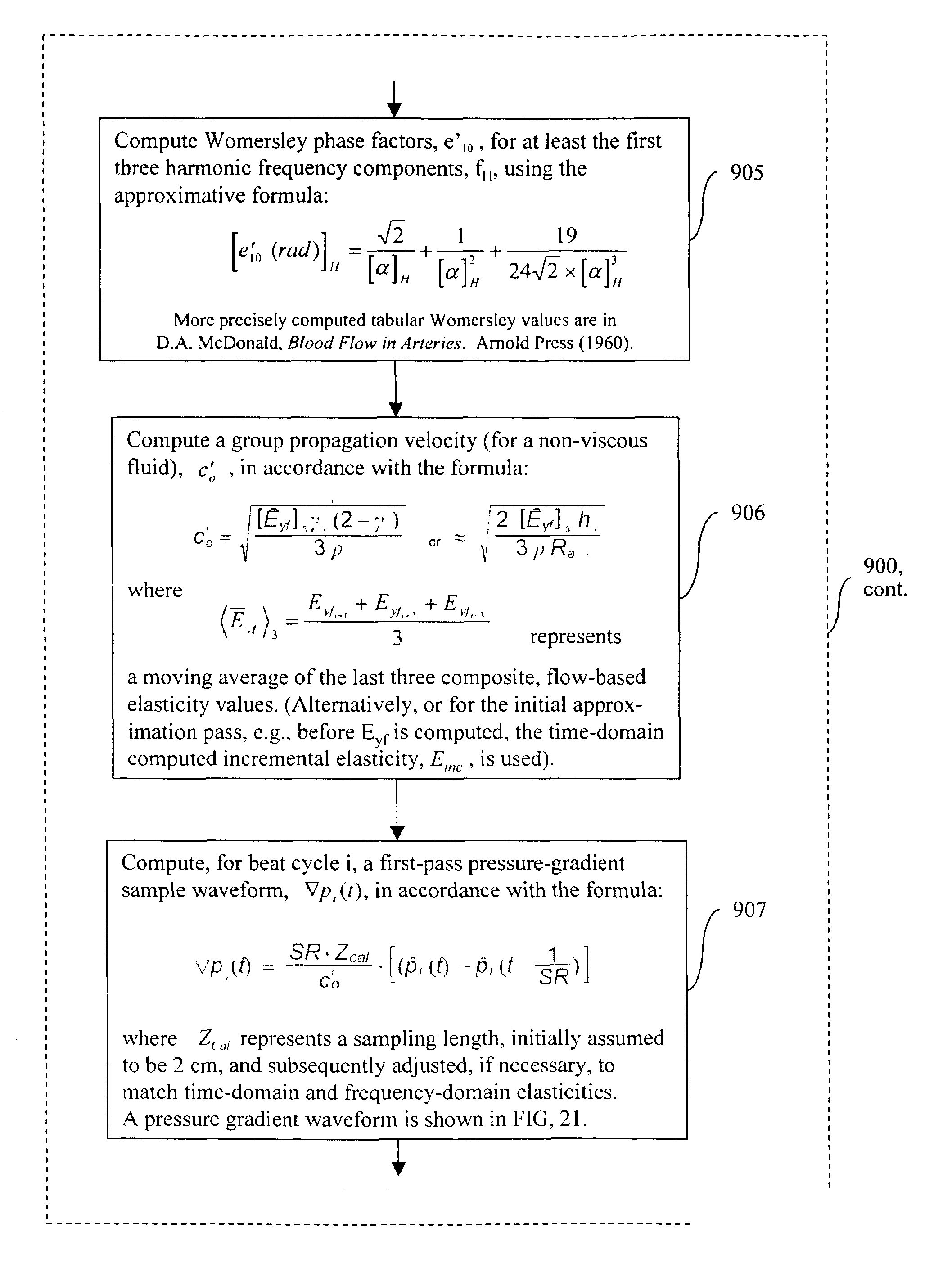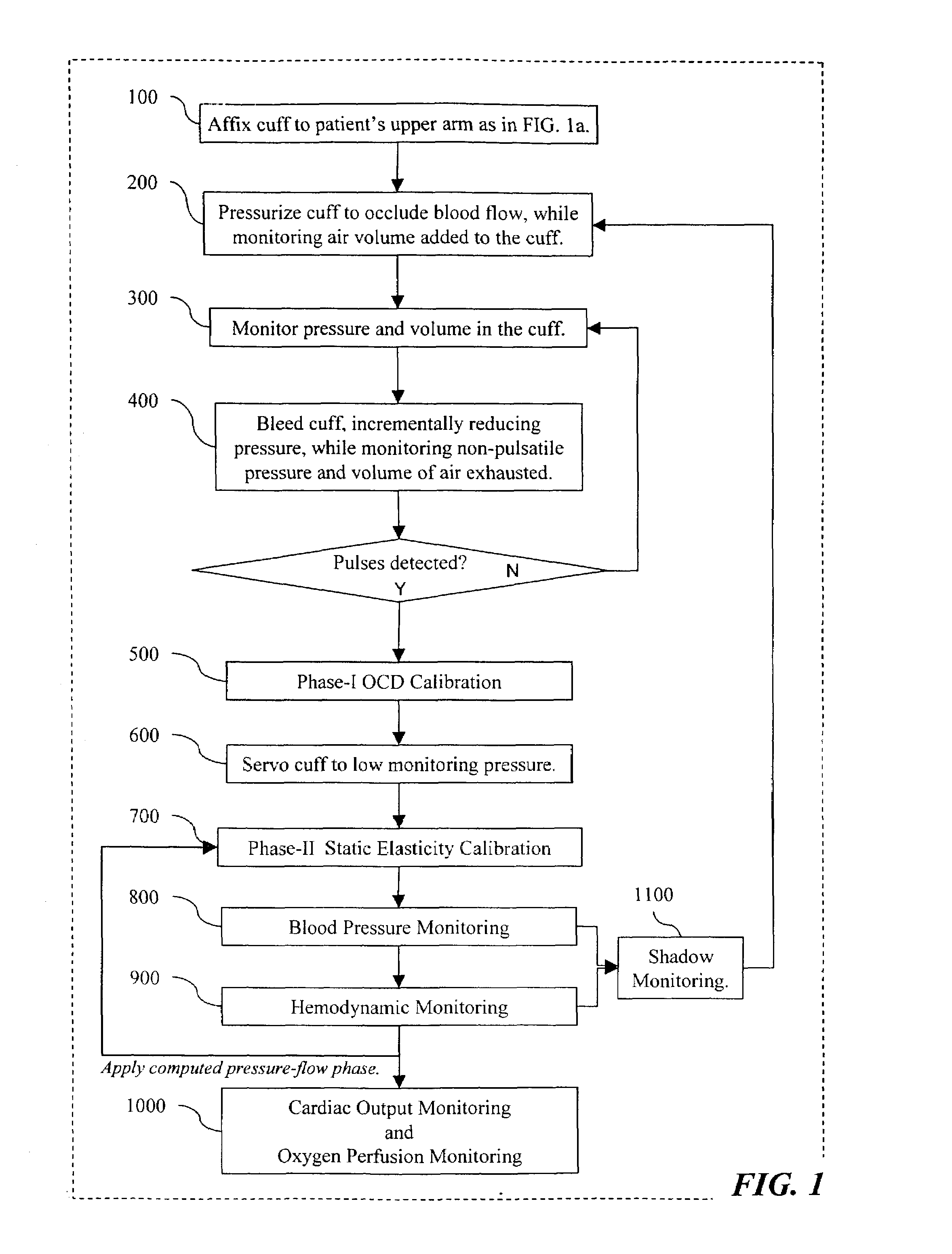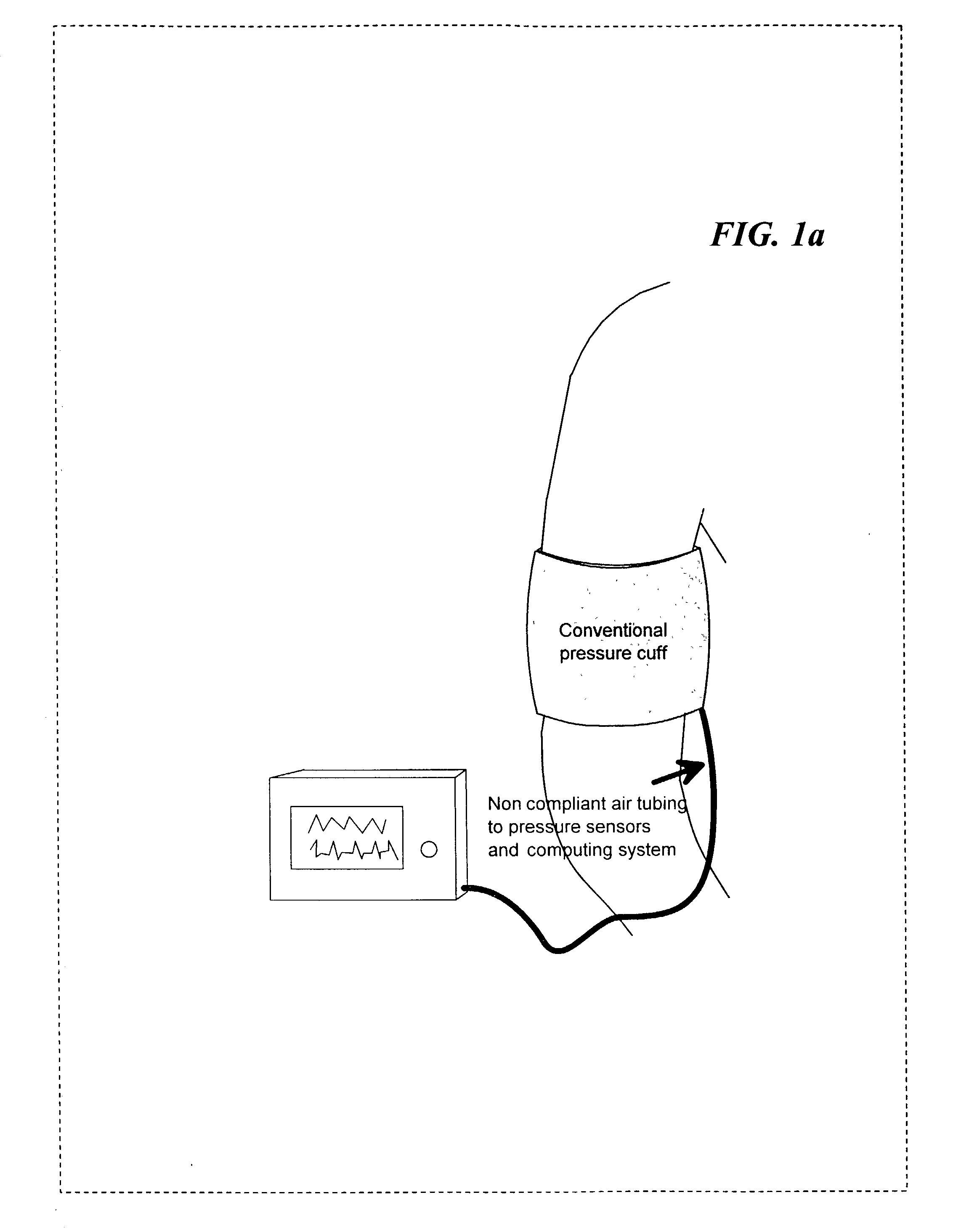Blood flow is a specific indicator of medical condition and
cardiovascular health, however, its measurement impracticality is impeding focus on important problems:inadequate warning of abnormal
blood flow and volumes in hospital care;ineffective warning of conditions that cause heart attacks and strokes;high mortalities of
septic shock and
drug problems;ineffective assessment and costly management of congestive
heart failure;brain impairment with
surgery of patients with cardiovascular disease; andineffective
disease management due to inaccuracy and limited relevance of BP.
Hospital pulse oximeter medical devices are practical for measuring relative
hemoglobin oxygen content in the blood, however, the impracticality of measuring
blood flow and its companions,
perfusion and cardiovascular disease, has caused these physiologic parameters to be neglected for a long time.
Invasive monitoring is costly and has inherent risks, and noninvasive flow monitoring has been unreliable and impractical: instead, blood pressure, pulse oximeter and
ECG monitoring is used, which inadequately specify patient condition.
ECG trace monitoring also lacks practicality and hemodynamic significance.
Physicians rely on blood pressure as the principal indication of blood flow and cardio-
vascular disease, but this is often misleading, especially with abnormal flows.
The relationship between flow and pressure is misunderstood and unpredictable.
Even when measured accurately, BP yields little information about its companion blood flow, the carrier of nutrients and waste products.
Flow varies unpredictably because the body's auto-regulation processes strive to maintain blood pressure constant and because of cardiovascular disease.
However, thickened
arteriole walls causes significant static impairment of the flow safety reserve, a high risk of adverse consequences of
hospital patients with cardiovascular disease.6. Anesthesiologists and critical care providers use
pulse oximeters to measure the
oxygen content in
peripheral blood
hemoglobin (the “O2SAT”), usually in a patient finger.
In
surgery, when practical blood flow monitoring is available, the hemodynamic cardiovascular conditions that cause neuropsychiatric
brain dysfunction (discussed below) and heart attacks may be identified for preventive intervention.9. In addition to not providing an indication of blood flow changes, present
non invasive blood pressure devices, by not taking into account blood flow variations, often give inaccurate or delayed blood pressure readings, which occur most commonly for the
critically ill and patients with cardiovascular disease.
Hemodynamic science also teaches that, even if measured accurately, blood pressure can not be a reliable indication of cardiovascular disease.
Moreover, if it is the effect of cardiovascular disease,
elevated blood pressure can not disclose: (i) the stage of the disease; (ii) whether it might be worsened by a
drug therapy; (iii) how rapidly the condition is worsening; and (iv) the resulting increased likelihood of heart
attack and
stroke.
This raises vital issues:Diagnosis and management of cardiovascular disease is based primarily on
risk factor information that is inexact and subjective;The reduced blood flows of cardiovascular disease can distort
non invasive blood
pressure measurement accuracy;
Blood pressure is a fluidic measure that tells little about effects on the heart and arteries.
Specifically, in material science, excessive higher frequency stresses (
internal forces of materials that exceed stress limits) are known to produce tiny structural fractures that can invite intrusion by extrinsic elements.
It is believed that the extra work of prolonged increased pulsatile
wall stress of end-arteries (the arterioles and pre-capillary
sphincter vessels) cause excessive developmental thickening of the end
artery muscular walls.
Such thickening results in smaller, statically constricted lumen, like thicker donuts with smaller holes.
Moreover, the costs of this are great, as evidenced by the $12 billion that had to be
set aside for claims related to rapid and extensive
heart valve disease caused by the Fen-Phen diet
pill.
Cardiovascular measurement is limited by
patient risk and costs of measurement; excluding imaging systems, the measurement of blood flow and continuous
blood pressure monitoring has been invasive; requiring the use of tubing in the heart, esophageal channel and / or vital arteries; moreover this is limited to a short time period because of infection spread, adverse patient reactions, and
artery inadequacy, as well as clotting and micro bubbles that cause significant inaccuracy.
Furthermore, noninvasive blood pressure devices are also inefficient and costly; they do not provide continuous surveillance; they are not tolerated by patients because repetitive
cuff pressurizations causes trauma and circulatory anomalies, they use flawed empirical methods that causes significant inaccuracy when artery elasticity and blood flow are abnormal, and cuffs are a major source of cross
contamination of staphylococci infection and other
sepsis in hospitals.
Summarizing, blood pressure, even when measured accurately, is an ineffective indication of hospital patient safety or disease condition.
Nevertheless, none of these provides a practical and economical solution to the monitoring needs of the medical
community.
The '138 patent does not teach or suggest the computation of any physically meaningful cardiovascular parameters; nor does it teach any means or method for performing such computation.
Such device is neither useful for, nor adaptable to, non invasive applications.
None of these Link patents teach or suggest any method for computing or estimating blood flow, even though blood flow is a principal
determinant of the noninvasive physiologic measures that are sensed for computing estimates of blood pressure in present blood
pressure measurement devices.
The '675 patent does not teach or suggest any method for measuring flow at the site(s) where the actual blood pressure
signal is being measured.
The '004 patent does not teach or suggest any method for computing a real-time
flow waveform, nor any
frequency domain cardiovascular or hemodynamic parameters.
The '981 patent does not teach, or suggest, any technique for computing
arterial wall lumen size or thickness.
Accordingly, there exists a long-felt, but unsatisfied, need for a reliable, economical and noninvasive technique for measuring
arterial blood flow.
There also exists a long-felt, but unsatisfied, need for a technique capable of providing such measurements on a continuous and / or real-time basis.
There still further exists a long-felt, but unsatisfied, need for improved critical care and surgical monitoring techniques that incorporate continuous and / or real-time flow-related data.
Finally, there exists a long-felt, but unsatisfied, need for improved techniques for diagnosing, monitoring, managing and / or treating patients with cardiovascular conditions and / or patients who are taking potentially
vasoactive drugs or drug combinations.
 Login to View More
Login to View More  Login to View More
Login to View More 


